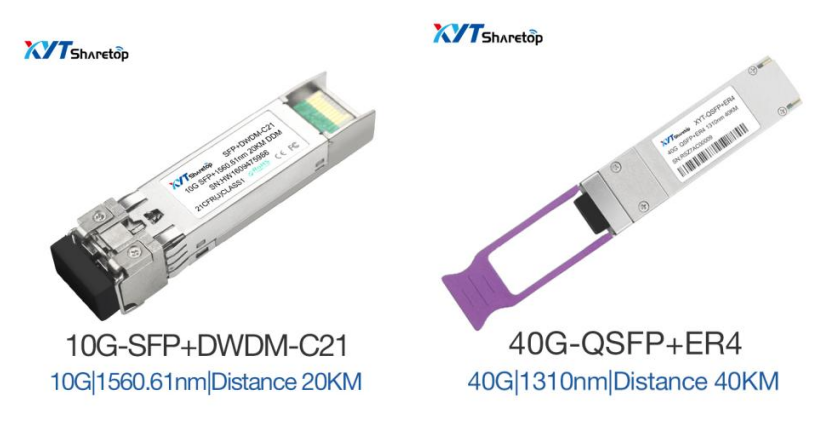The optical module is composed of optoelectronic devices, functional circuits and optical interfaces. The optoelectronic device includes two parts: transmitting and receiving. Simply put, the role of the optical module is photoelectric conversion. The transmitting end converts theethernet into an optical . After transmission through the optical fiber, the receiving end converts the optical into anethernet. Nowadays, optical modules are getting more and more attention in communication operations. SFP optical modules are the most popular one among the modules. Next, we summarize the common sense of SFP optical modules from the following aspects. Let's take a look.
The encapsulation method of SFP optical module is hot-swappable small package, and the maximum speed can reach 10G (SFP+), and the LC interface is more. The abbreviation of SFP is Small Form-factor Pluggable, which can be simply understood as an upgraded version of GBIC. The volume of the SFP optical module is cut in half compared to the GBIC optical module, and the number of ports can be more than doubled on the same panel.
The SFP optical module is composed of a laser, a circuit board IC and external accessories. The external accessories include the housing, unlocking parts, buckles, base, pull ring, rubber plug, PCBA, and the difference in color of the pull ring can help us distinguish the different parameter types of the module.
GBIC and SFF optical modules are gradually replaced by SFP optical modules with the rapid development of optical networks. It is moving in the direction of miniaturization and hot swap. The SFP optical module inherits the hot-swappable characteristics of GBIC and also learns the advantages of SFF miniaturization. The use of LC headers greatly increases the port density of network equipment. With the rapid development of optical networks, it has been widely used. Although many higher performance and higher rate optical module products are continuously developed on the market, such as 40G (QSFP+), 100G (QSFP28), etc., SFP optical modules will continue to exist for a long time.

1. Before using the optical module and optical fiber, be sure to keep the dust-proof plug and protective cover of the optical port until the optical module is inserted into the optical fiber.
2. Keep the end face of the optical fiber connector clean, and insert it horizontally when inserting the optical port to avoid scratching the end face and sleeve.
3. Avoid using non-standard optical fibers in the construction of the computer room, and pay attention to distinguish single-mode and multi-mode optical fibers.
4. In any case, it is not possible to directly perform loopback test on long-distance optical modules to avoid short-distance interconnection of long-distance optical modules. When the optical power is too strong, the receiving detector will be damaged.
5. When the optical module is used in the transmission platform link, if there is an optical fiber amplifier, please adjust the optical power to the receiving range of the optical module and then insert it into the receiving port of the optical module.
6. When using, please try to keep the temperature of the optical module within 60°C (commercial grade 75°C). If it exceeds 70°C (industrial grade 85°C), the optical module may be burnt out directly.
7. The equipment in the equipment room should be properly grounded, and electrostatic protection should be done during operation to avoid the impact of static electricity on the optical module and equipment. Static protection should be done during installation. Do not touch the golden finger of the optical module during the installation operation.

隐私保护 |
法律声明 |
在线留言 |
网站导航 |
网站地图 |
文档下载 | 咨询热线:0755-27524036 |
订阅
深圳纤亿通科技有限公司版权所有 转载必究 Copyright 2010-2019 poptimes CO.,Ltd. All rights reserved.
备案号:粤ICP备14020946号
友情链接: 光创未来| fiber168| 纤亿通光源放大器网站| 纤亿通光模块网站| 纤亿通保偏无源器件网站| 纤亿通OTN网站

